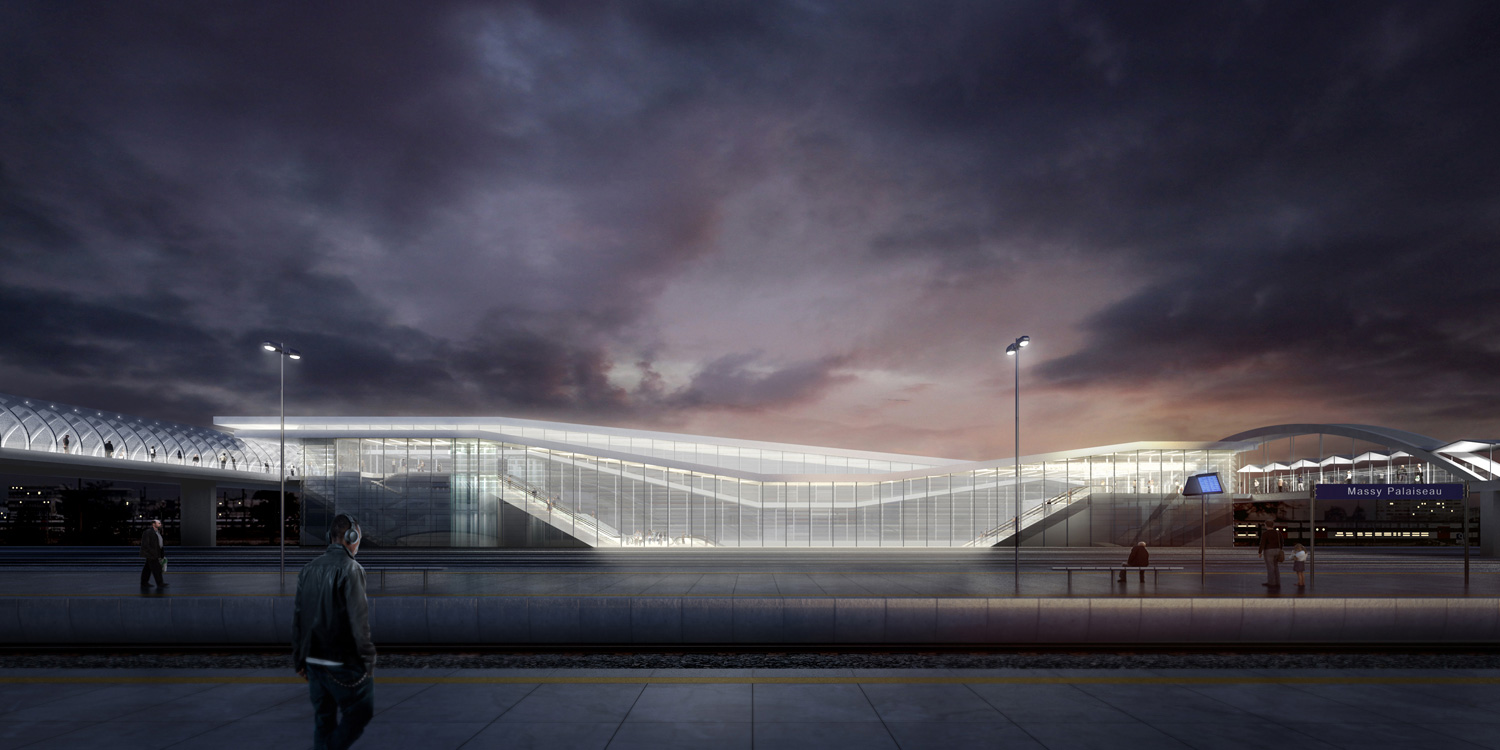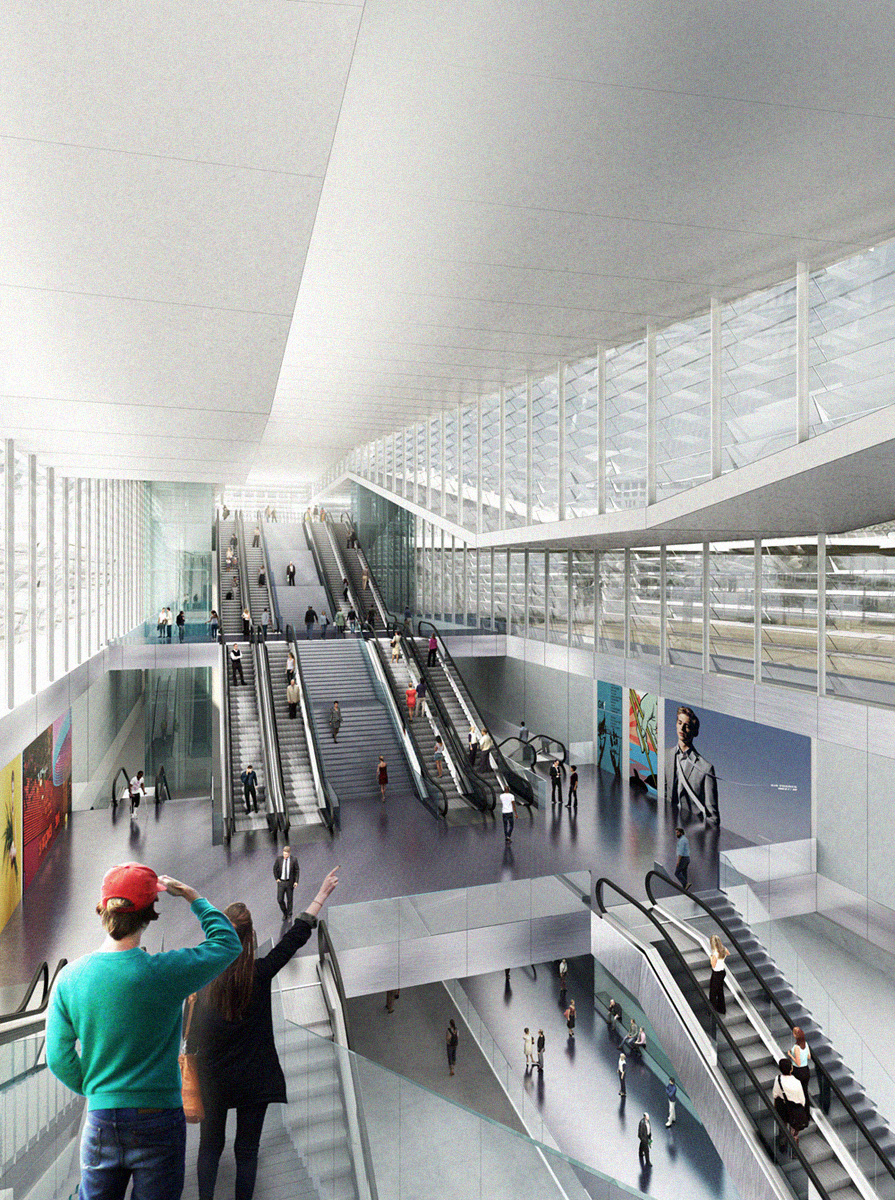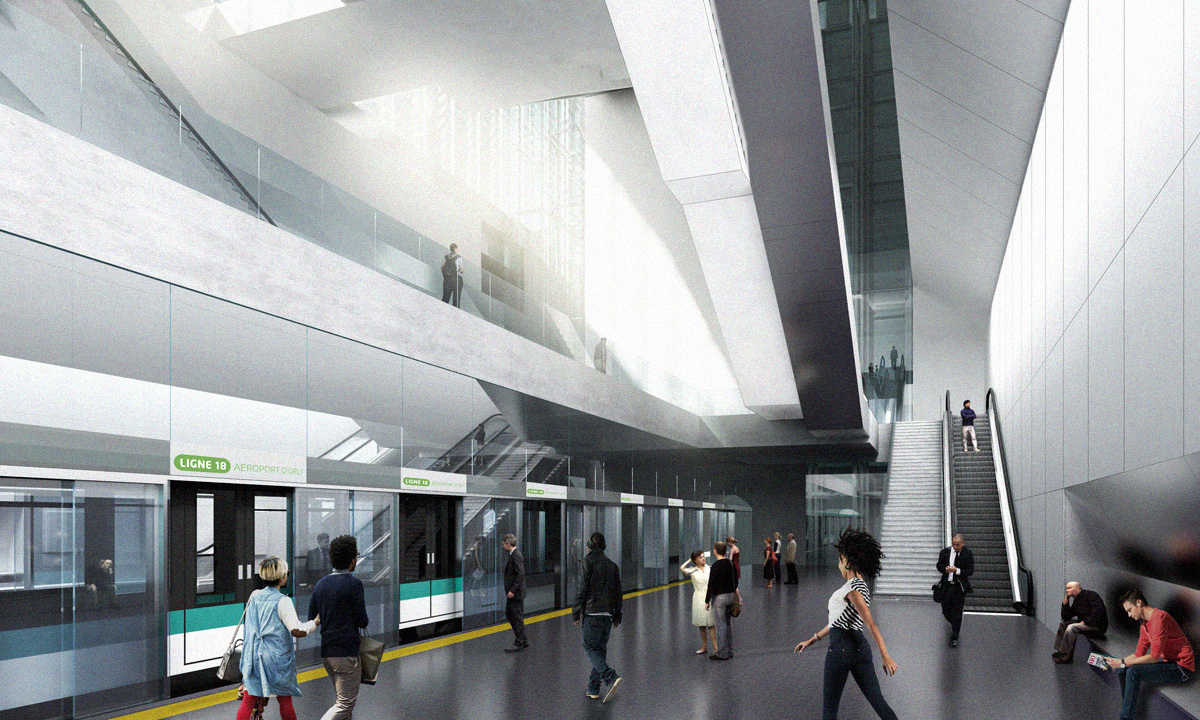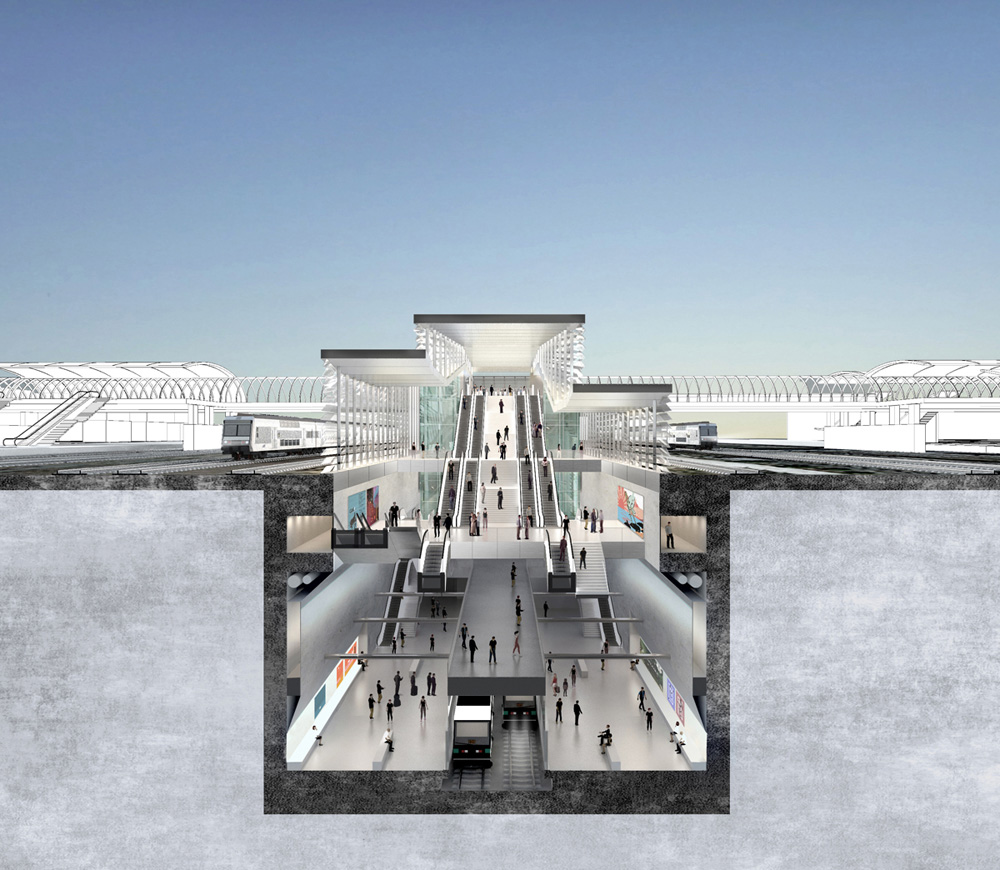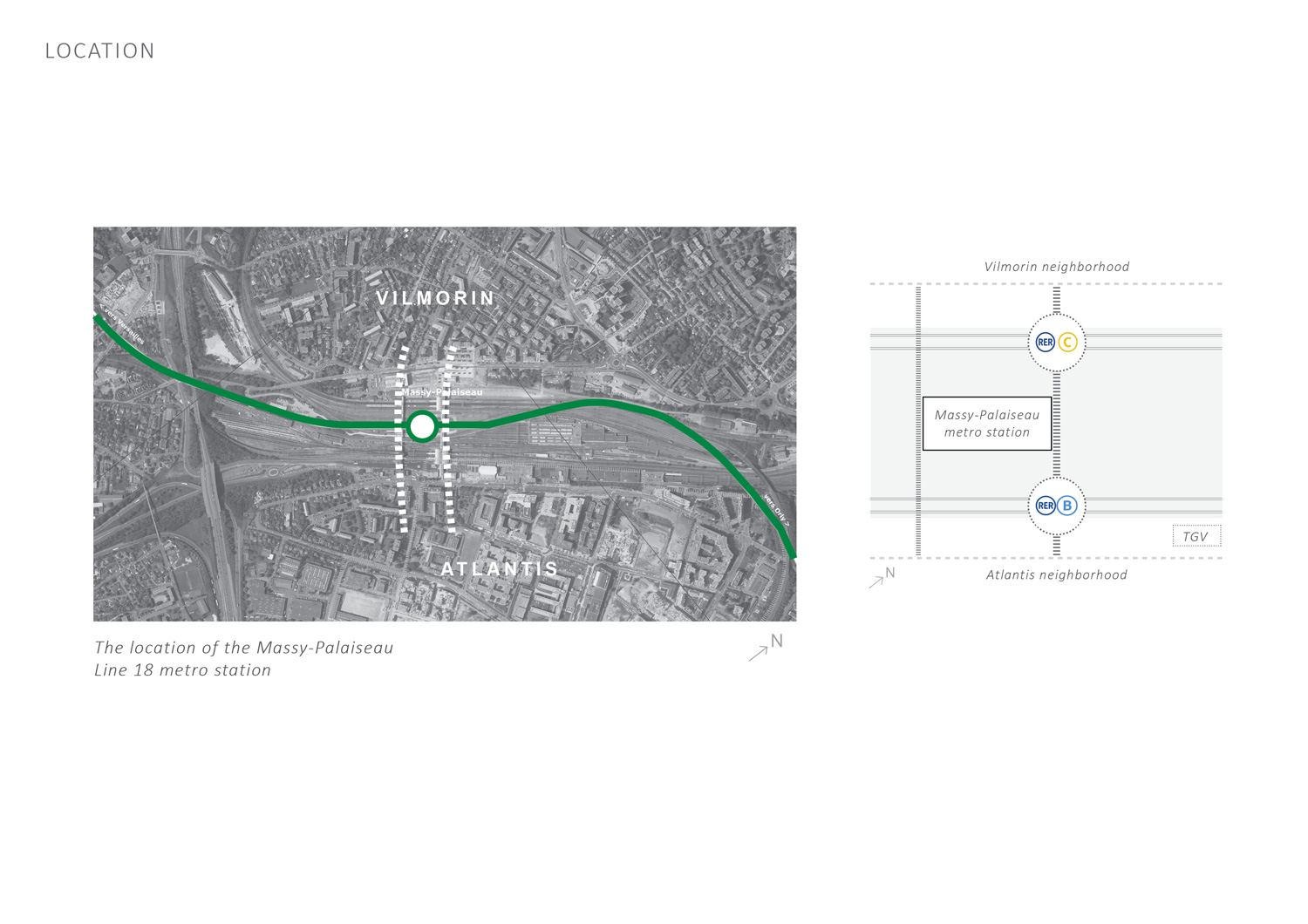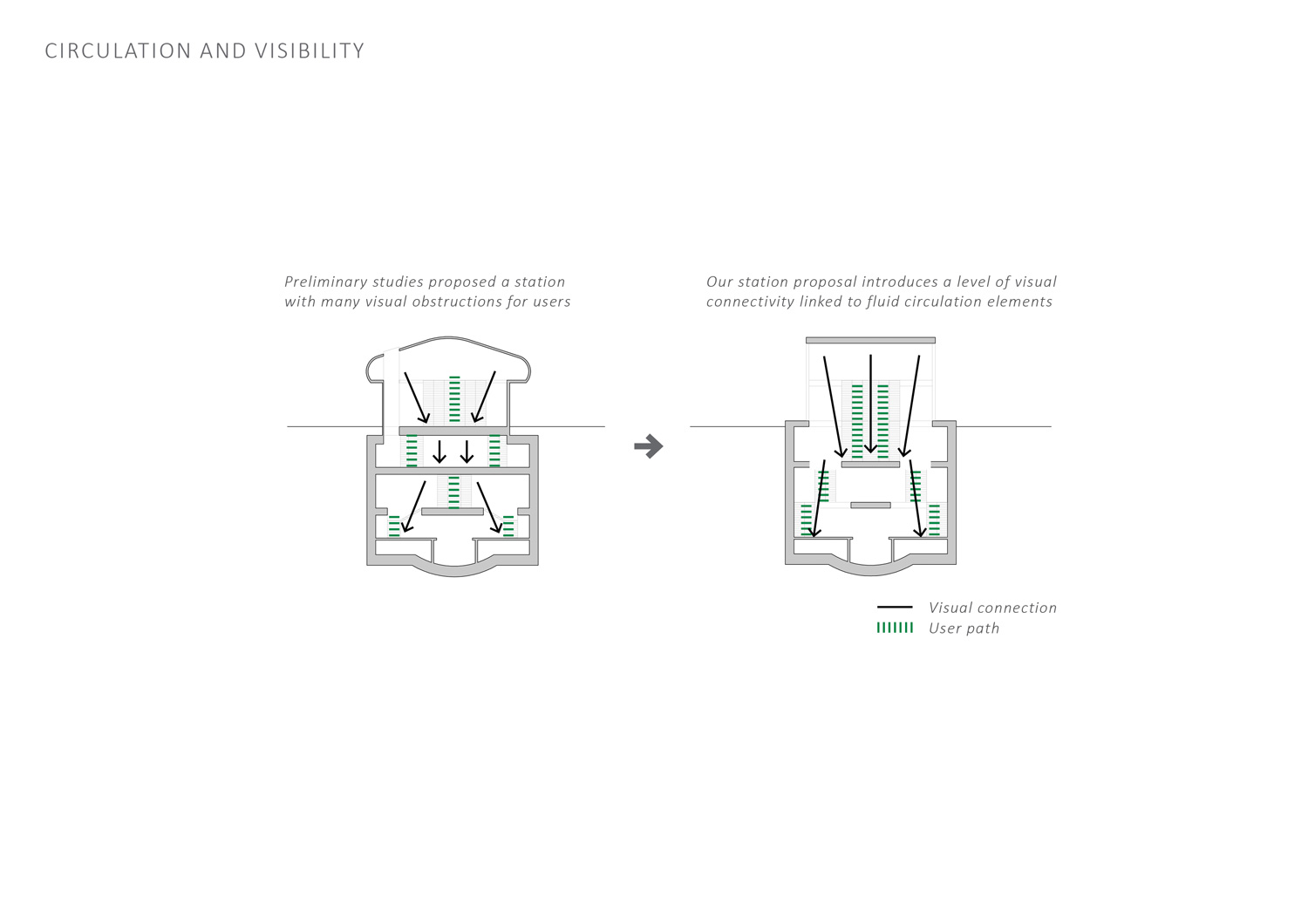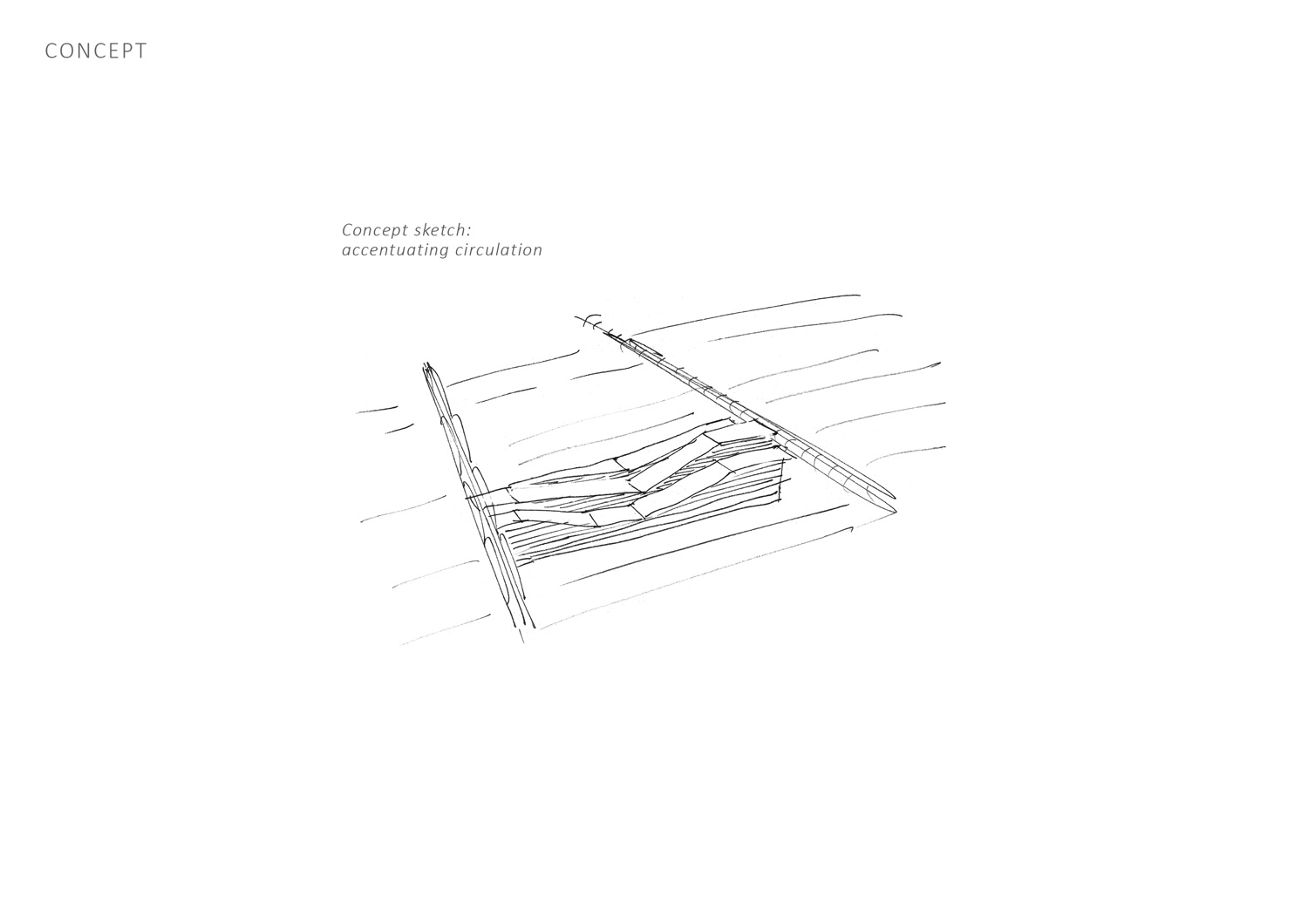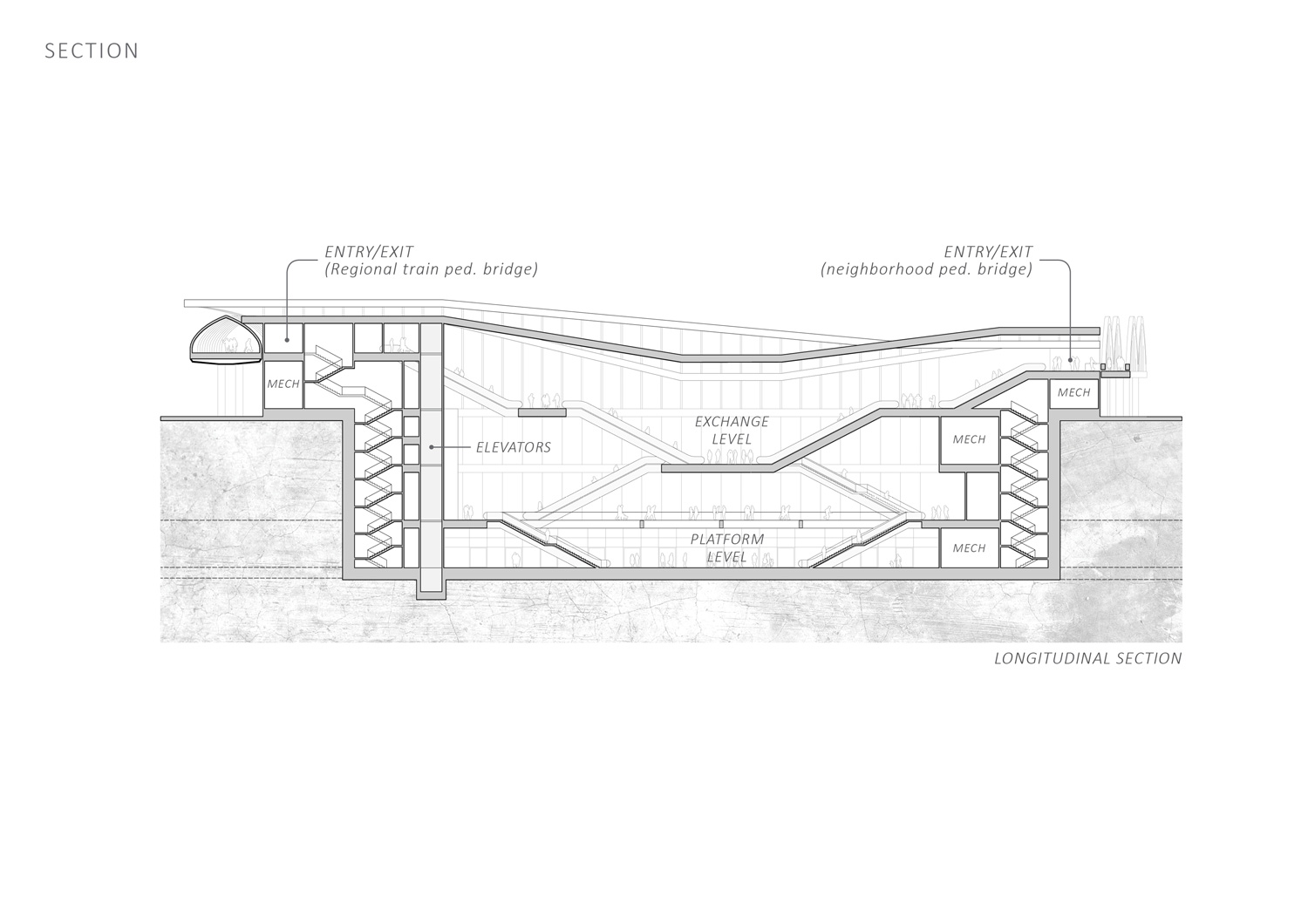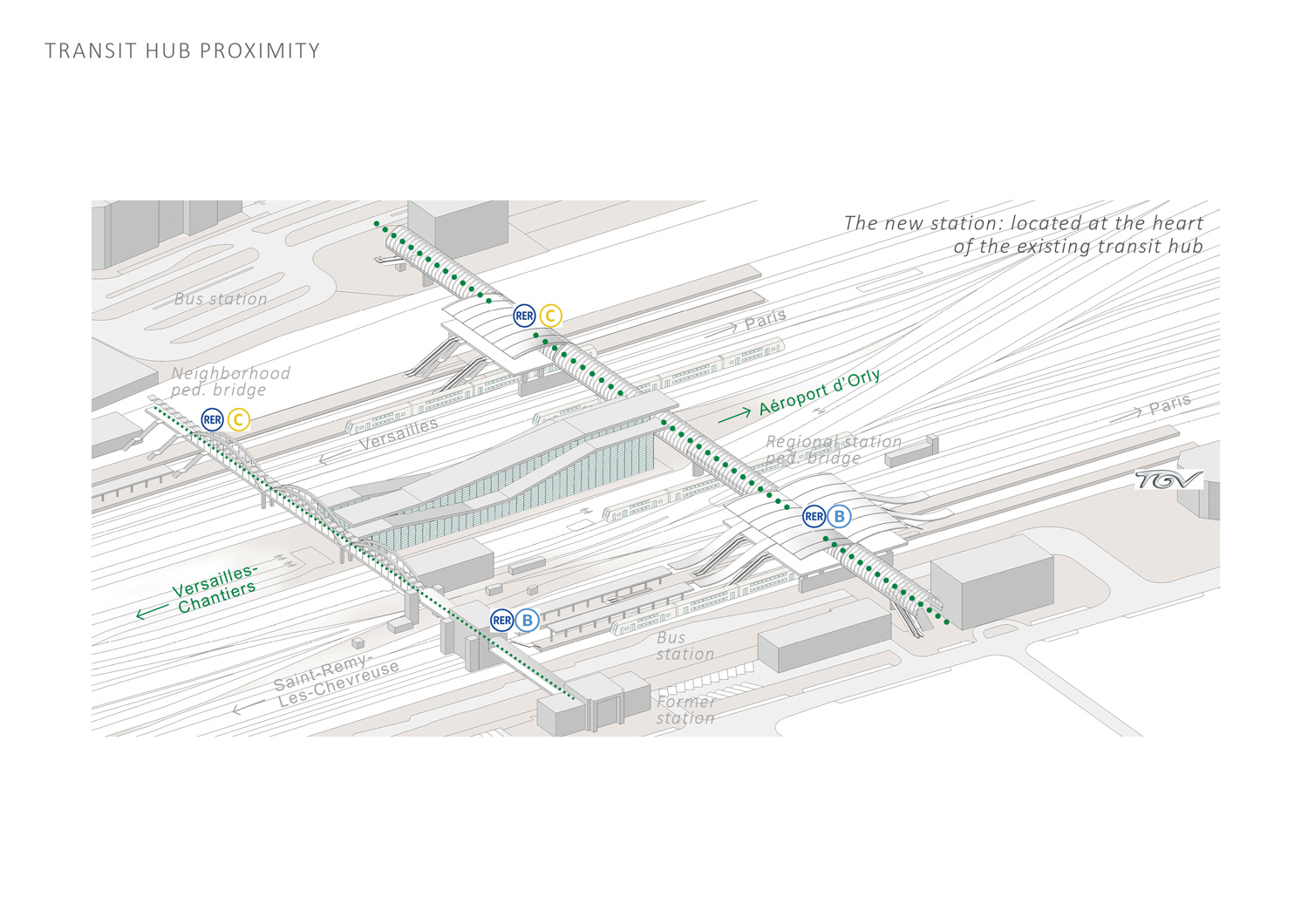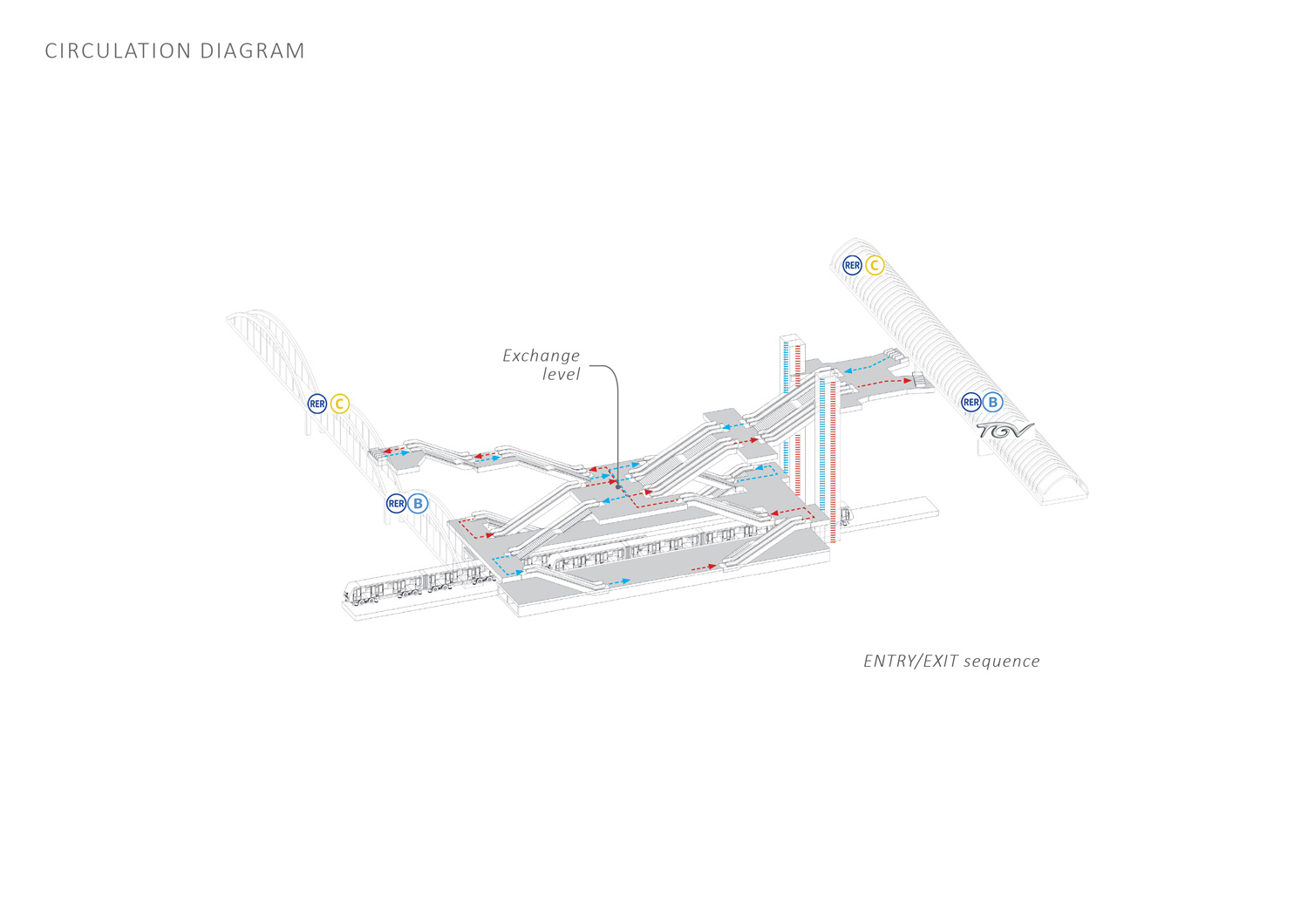1511-SDA-PAR.FR-2015
Client: Unknown
Status: Competition (2015)
Clasification: 2 prize
Location: Paris, France
Coordinates: 48.724963, 2.260316
Climate: Temperate, Oceanic / maritime
Materials: Glass, Concrete
Environments: Urban, Railway
Visualizer: Studio
Budget: 40.200.000 €
Scale: 5.300 ㎡ Medium
Ratio: 7.584,91 €/㎡
Types: Station, Transport
Located to the South of Paris between the Communes of Massy and Palaiseau, the Massy‐Palaiseau transit hub is an already dense connection point for regional and high‐speed rail networks, bus lines, and tourist coaches. Its two pedestrian bridges serve as crossing points for residents circulating between the adjacent neighborhoods of Vilmorin and Atlantis. Its taxi stands, drop‐off areas, and parking garages generate significant vehicular traffic. Yet amidst all this commotion is to be a new Line 18 metro station, named simply Massy‐Palaiseau.
The station is located on the lone swath of land large enough to accommodate it – sandwiched between rail lines and the pedestrian bridges connecting opposite sides of the tracks. The bridges themselves, however, serve two different functions. One, an older arched structure located perpendicular to the Western entrance to the metro station, links the two aforementioned neighborhoods and is mainly used by local residents. The other, on the Eastern side, is a large, metallic and glass structure designed by the French affiliate of the SNCF (state railway organization) to link the two regional rail stations (RER B and C platforms). It also serves as a main circulatory element for those moving to and from the nearby high‐speed rail station.
More importantly, these bridges highlight the challenge associated with designing the new metro station. Their architectures being very different, they are but one of several styles found sur place . Creating a “landmark” metro station without adding to the visually jarring architectural landscape is of singular importance.
To resolve this, the station’s design considers an inside‐out approach.
Internal circulation studies dictated the amount of vertical and horizontal circulation space required, optimal locations for service and support spaces, as well as opportunities to open visual connectivity through the station, thereby removing the corridor effect of many underground stations.
Inside the station and moving through the entry level, users descend to the “exchange level” of the station, which is situated almost at the level of the regional rail tracks (located “outside”). This “exchange level” allows users to choose their respective path from inside the building: exiting passengers can decide which pedestrian bridge to take based upon their itinerary and entering passengers are directed to the appropriate platform depending on their desired direction of travel.
Housed within the expansive space provided by the vaulted and clerestory structure described below, this level enables users to see where escalators and elevators lead, again in order to create smooth transitions from the metro to the outside environment.
Yet the aboveground portion of the station is only about one‐third of the new structure. As a subterranean network, the Line 18 runs some 23 meters underneath ground level through the site of Massy‐Palaiseau! Accompanying and guiding users to the platforms would as a result, normally involve a challenging array of escalator “switch‐backs.”
The station’s exchange level thus serves a secondary role: it not only allows users to visualize their internal paths within the station, it reduces the number of 180‐degree turns required to bring them to the platform level. The preliminary design for the station, analyzed at the outset of the tender process, proposed four of these turns.
The new station proposal proposes only two, with the first of these occurring at the “exchange level.”
The building’s megastructure plays on its “subterranean” nature of the station with its vaulted clerestory structure. Comprising three bands, the interior ambiance of the station is a series of “mega‐trellis” beams running in the longitudinal direction, supported laterally by clerestories. With the three bands undulating independently from each other, light is able to enter the interior of the station via the uppermost clerestories.
The structure of the station, thus, also serves as its façade, with a system of glazed and metal brise‐soleil elements devised to temper direct sunlight. A vast majority of this natural light spills onto the exchange level – from there, the light reflects off the subsequent levels and off escalator shafts, providing a unique filtering effect as one moves towards the lowest part of the station.
In short, the station is a container that houses a series of escalator and elevator banks leading to metro train platforms. The container shifts at its roof level to (1) allow for daylight to enter the station interior and (2) create a compression that produces enough visual contrast to signal the presence of the metro station on its site. Seen from the adjacent RER B or C platforms, the building is a series of gently undulating bands, with the overarching form being that of a V.
Such a shape resolves the building’s island condition. Because access is only possible via the pedestrian bridges, the station rises up to meet the existing structures. One crosses from the station to the bridges without interruption: users remain protected from inclement weather, paths are well lit and guided, and the Grand Paris station environment (to be common for the entire network) allows for easy identification of ticketing and info points.
